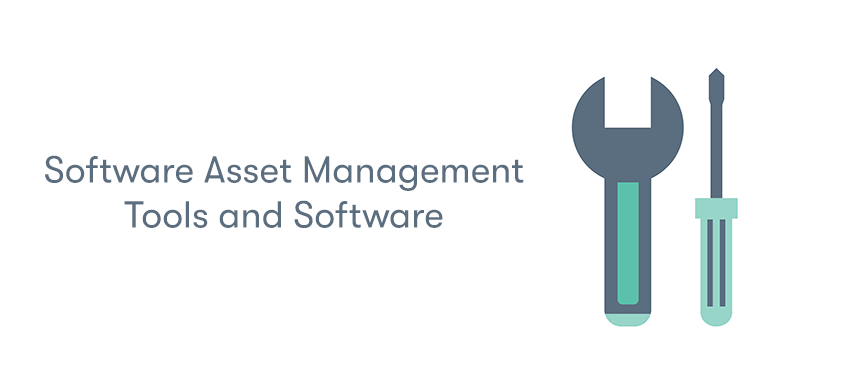Software Asset Management Tools and Software
Welcome to our exploration of Software Asset Management Tools and Software - a cornerstone in modern organisational efficiency and compliance. In this digital age, where software permeates every aspect of business operations, effectively managing these assets is a necessity and a strategic imperative.
SAM tools are sophisticated solutions designed to monitor, manage, and optimise the use of software within an organisation. They are the backbone for ensuring compliance with licensing agreements, optimising software expenditures, and enhancing overall IT infrastructure efficiency.
As we dive into the nuances of SAM, we'll uncover how these tools not only safeguard against legal and financial risks but also pave the way for streamlined operations and strategic decision-making in the ever-evolving technological landscape.
What Are Software Asset Management Tools?
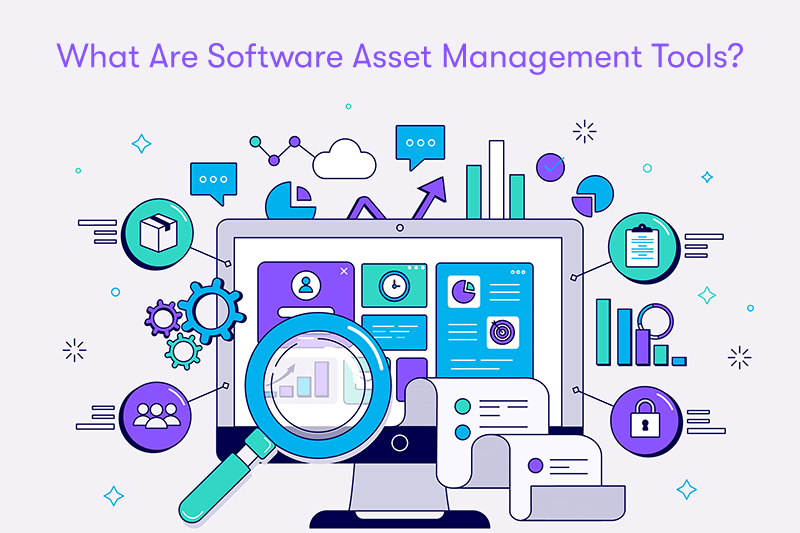
Software Asset Management tools are systems designed to manage, control, and protect software assets within an organisation effectively. These tools play a crucial role in optimising the use of software and ensuring compliance with licensing agreements. Here are some key functions and benefits of SAM tools:
Inventory Management
SAM tools keep track of all the software assets across the organisation. They provide a detailed inventory of what software is installed, where it is installed, and how it is used.
License Compliance
They ensure that the organisation complies with various software licensing agreements. This helps in avoiding legal issues related to under-licensing or pirated software.
Cost Management
By monitoring software usage, SAM tools help organisations to optimise their software expenditures. They can identify unused or underused licenses, which can then be reallocated or discontinued to save costs.
Software Deployment and Updating
SAM tools assist in software deployment and ensure that all software is up-to-date. This is critical for security, as outdated software can be a vulnerability.
Risk Management
They help identify and mitigate risks associated with software assets. This includes managing the risks related to software compliance, cyber security threats, and operational inefficiencies.
Reporting and Analysis
SAM tools provide comprehensive reports and analytics on software usage, expenditures, compliance, etc. This information is vital for strategic decision-making and IT planning.
Integration with IT Systems
Many SAM tools integrate with other IT management systems, such as IT service management (ITSM) and IT asset management (ITAM), for a more holistic view of IT assets.
Vendor Management
They assist in managing relationships with software vendors, including negotiations and renewals, and understanding the terms and conditions of software contracts.
In summary, Software Asset Management tools are essential for managing the software lifecycle within an organisation, ensuring compliance with licensing terms, optimising software investments, and reducing risks associated with software assets.
Benefits of Using Tools for Software Asset Management
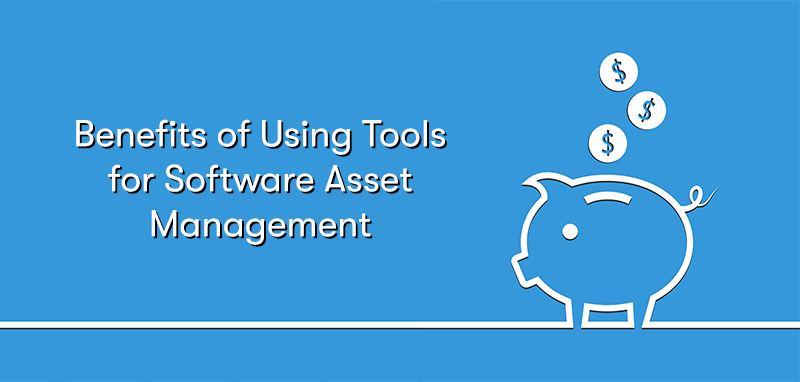
Using a tool for Software Asset Management brings numerous benefits to an organisation, enhancing efficiency, reducing costs, and ensuring compliance. Here are some of the key advantages:
Cost Savings
SAM tools help identify underutilised or unused software licenses, allowing for their reallocation or termination. This optimises software spending and can result in significant cost reductions.
Compliance with Licensing Agreements
SAM tools ensure compliance with various licensing terms and agreements by managing and tracking software licenses. This reduces the risk of legal penalties and fines due to non-compliance or unauthorised use of software.
Enhanced Security
Keeping software up to date is crucial for security. SAM tools facilitate the management of software updates and patches, reducing the risk of security breaches associated with outdated software.
Improved Software Utilisation
These tools provide insights into how software is used within the organisation, allowing for better allocation of resources and improved efficiency.
Risk Management
By managing software assets effectively, SAM tools help mitigate risks related to software compliance, cybersecurity threats, and operational inefficiencies.
Strategic Planning and Decision Making
With detailed reporting and analytics, SAM tools provide valuable data to inform strategic IT planning and decision-making.
Streamlined IT Operations
Integration with other IT management systems (like ITSM and ITAM) ensures a more streamlined and efficient approach to managing IT assets, reducing administrative overhead and improving operational efficiency.
Vendor Management
SAM tools assist in managing relationships with software vendors, which is crucial for negotiating better terms, handling renewals, and understanding contract details.
Reduced Audit Risks
Regular and accurate tracking of software assets prepares an organisation for software audits, reducing the risks and potential costs associated with these audits.
Environmentally Friendly
By optimising the use of software, organisations can contribute to sustainability efforts. Reducing the number of unnecessary software licenses can indirectly reduce the environmental impact.
In summary, Software Asset Management tools provide a comprehensive approach to managing an organisation's software assets. They are crucial in cost management, compliance, security, and overall IT efficiency.
Features to Look Out for From a SAM Software
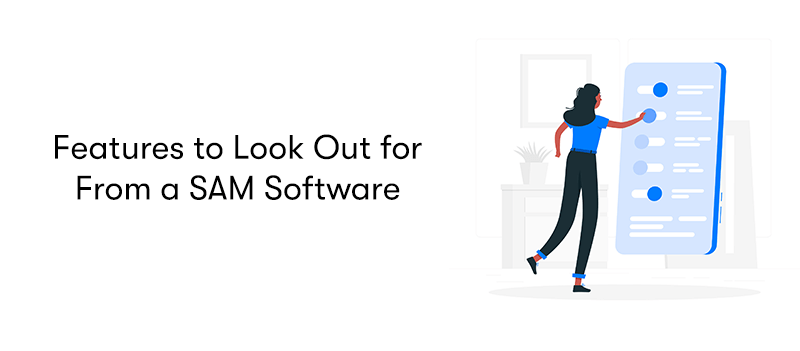
When selecting a Software Asset Management tool, it's essential to consider a range of features that will meet your organisation's specific needs. Here are key features to look out for:
Comprehensive Inventory Management
The tool should be able to automatically discover and inventory all software assets across the organisation's network. This includes the ability to track software installations, usage, and versions.
License Management
Effective management of software licenses is crucial. The tool should be able to track various types of licenses (like perpetual, subscription, or usage-based) and ensure compliance with licensing agreements.
Integration Capabilities
It should integrate seamlessly with other IT management systems, such as configuration management databases (CMDB), IT service management (ITSM), and hardware asset management systems.
Usage Monitoring and Optimisation
The ability to monitor software usage patterns to identify underutilised or unused licenses for cost optimisation.
Compliance and Audit Support
Features that support compliance with software licenses and assist in audit preparation, including generating reports and alerts for non-compliance issues.
Financial Management
The tool should provide financial insights, such as tracking software costs, calculating return on investment (ROI), and helping in budgeting and forecasting.
Contract and Vendor Management
Managing software contracts, renewals, and vendor relationships, including tracking terms, conditions, and renewal dates.
Security and Risk Management
Identifying security vulnerabilities related to software, including outdated or unpatched software, and assessing associated risks.
Custom Reporting and Analytics
The ability to generate customised reports and analytics to provide insights into software asset usage, compliance, and efficiency.
User-Friendly Interface
A user-friendly and intuitive interface that simplifies the management of software assets for different user levels within the organisation.
Scalability
The tool should be scalable to adapt to the organisation's growing needs.
Cloud and On-Premises Software Management
Capability to manage both cloud-based and on-premises software applications.
Support and Training
Good customer support and training resources to ensure effective implementation and utilisation of the tool.
Policy Management
Ability to set and enforce software procurement, deployment, and usage policies.
Mobile Device Management
If applicable, management of software on mobile devices in addition to traditional computing environments.
Selecting a SAM tool with these features will ensure comprehensive management of software assets, enabling your organisation to realise cost savings, enhance compliance, improve operational efficiency, and mitigate risks associated with software management.
Why Managing Software Assets Is Important

Managing software assets is crucial for any organisation for several reasons:
Cost Savings and Optimisation
Proper software asset management (SAM) helps identify underused or unused software licenses. An organisation can significantly reduce unnecessary software costs by reallocating or discontinuing these licenses. It also aids in negotiating better terms with vendors based on actual usage data.
Compliance and Legal Risks
Software licenses come with specific terms and conditions. Non-compliance with these terms can lead to legal issues and hefty fines. SAM ensures that an organisation complies with all licensing agreements, thus avoiding legal penalties and reputational damage.
Enhanced Security
Keeping track of all software assets and ensuring they are up to date is vital for security. Outdated or unauthorised software can be a gateway for cyber threats. SAM tools help manage software updates and patches, reducing the risk of security breaches.
Efficient Use of Resources
SAM provides insights into software usage across the organisation. This information allows for better allocation of IT resources, ensuring that investments in software are fully utilised and aligned with business needs.
Audit Preparedness
Regular and accurate tracking of software assets prepares an organisation for software audits. It reduces the risks and potential costs associated with these audits, including disruptions to business operations.
Strategic Decision Making
SAM offers valuable data and analytics that inform strategic IT planning. Organisations can make more informed decisions about software investments, upgrades, and IT infrastructure planning.
Risk Management
Effective SAM helps identify and mitigate various risks, including compliance, operational, and financial risks related to software assets.
Improved Vendor Management
Managing software assets includes overseeing vendor relationships. SAM ensures that you know contract renewal dates, terms, and conditions, facilitating better negotiation and management of vendor contracts.
Supports Innovation and Growth
Organisations can allocate more resources to innovation and growth initiatives by managing software assets efficiently rather than dealing with compliance issues or unnecessary expenses.
Environmental Sustainability
Optimising software usage can contribute to an organisation's sustainability efforts. By reducing the number of unnecessary software licenses, there is an indirect reduction in the environmental impact associated with the manufacturing and maintenance of these assets.
In essence, effective management of software assets is not just about compliance and cost; it's about gaining a strategic advantage through optimised use of technology, enhancing security, and supporting the organisation's overall objectives.
Do You Need Paid Tools for Managing Your Software Assets?
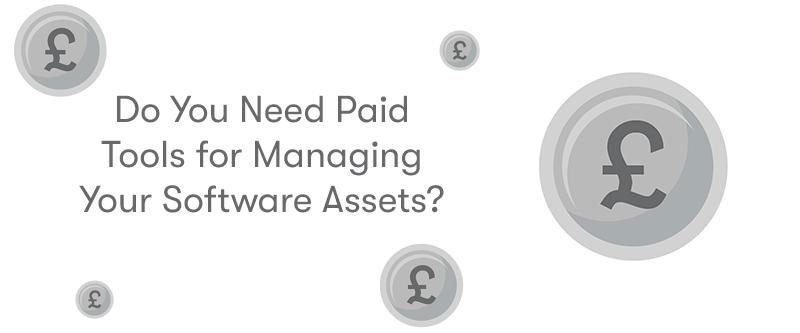
Whether you need paid tools for managing your software assets depends on various factors, such as the size of your organisation, the complexity of your software environment, compliance requirements, and budget constraints. Here's a breakdown to help you decide:
Small to Medium Businesses
Simple Environments: Basic or free tools might suffice for smaller businesses with limited software assets. Simple spreadsheet-based tracking can be adequate for minimal software inventories.
Budget Constraints: SMBs often operate under tight budget constraints. Free tools or basic paid options with essential features might be more appropriate.
Growth Phase: If the business grows rapidly, investing in a scalable paid tool early on can save future hassles and transition costs.
Large Enterprises
Complex Software Environments: Large enterprises typically have complex software environments with various software assets to manage. Paid SAM tools are almost always necessary in these cases due to the sophistication required for management and reporting.
Compliance and Audits: Larger organisations are more likely to face software audits. Paid SAM tools provide better capabilities for ensuring compliance and preparing for audits.
Integration Needs: Enterprises often need SAM tools to integrate with other enterprise systems (like ERP, ITSM, etc.). Advanced integration capabilities are usually found in paid tools.
Other Considerations
Specific Features: Paid tools often offer advanced features such as automated discovery, detailed analytics, and more comprehensive reporting. A paid solution may be justified if these features align with your organisation's needs.
Security and Support: Paid tools typically offer better security features and customer support, which can be crucial for handling sensitive data and ensuring uninterrupted operations.
Regulatory Compliance: If your organisation operates in a regulated industry, the enhanced compliance capabilities of paid tools can be essential.
Alternatives
Freemium Models: Some SAM tools offer a freemium model where basic features are free, but advanced features require payment. This can be an excellent middle ground for some organisations.
Open-Source Tools: There are open-source SAM tools available that offer customisation and flexibility without the cost of commercial products. However, they may require more technical expertise to deploy and manage.
Conclusion of Tools for Managing Your Software Assets
Ultimately, the decision to use paid SAM tools should be based on a thorough assessment of your organisation's specific needs, the complexity of your software environment, and the value that advanced features and support bring to your software asset management practices. For many larger organisations or those with complex needs, paid tools are often a necessary investment. In contrast, smaller businesses with more straightforward needs might manage effectively with free or low-cost solutions.
Final Notes on Software Asset Management Software and Tools
In conclusion, this discussion has highlighted the critical importance of Software Asset Management in modern organisations. From understanding the fundamentals of SAM tools and their substantial benefits, such as cost savings, compliance adherence, and enhanced security, to evaluating whether paid tools are necessary for your business, we've covered a comprehensive spectrum. For large enterprises, paid SAM tools are almost indispensable due to their complex software environments and compliance requirements. In contrast, small to medium businesses might find free or basic tools sufficient.
The key takeaway is that effective SAM is not just about managing software licenses; it's a strategic approach that aligns technology use with business objectives, ensuring operational efficiency and legal compliance. Remember, the right SAM strategy and tools are instrumental in steering your organisation towards sustainable success in the digital age.


